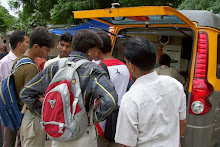Asia Times: Angshuman Chowdhary: Srinagar: Friday, June 22, 2018.
When the UN Office of the High Commissioner for Human Rights (OHCHR) released its first-ever report on Kashmir on June 14, India went into fierce denial. Its Ministry of External Affairs (MEA) released a sharply worded rebuttal the same day, accusing the 49-page report of building a “false narrative” and violating India’s sovereignty and territorial integrity.
It is understandable that New Delhi, in a tight spot, had to respond before the international community drew any hasty conclusions. But the MEA response shows nothing except taking blunt offense and boiling the entire issue down to only “terrorism.”
Is the report actually biased?
A cursory reading of the report shows that the OHCHR focused on India’s alleged excesses in Kashmir much more than Pakistan’s. Even the section on human-rights abuses by “armed groups” runs just a little over three pages.
The key question here is, why did the authors do so? The report, in its methodology section, explains that the degree of access for neutral observers in conflict zones, including OHCHR, is greater in India than in Pakistan. Contrary to the MEA’s perception, this speaks well of India and thus strengthens its case on Kashmir.
In its response, the MEA said “the authors have conveniently ignored the pattern of cross-border terrorism emanating from Pakistan and territories under its illegal control.”
On the contrary, however, the report pointedly talks about not just cross-border terrorism in Kashmir, but also the direct support that the Pakistani state provides to such disruptive entities. Clauses 5 and 135 refer precisely to this, while also pointing out that the prominent cross-border militant entities in Kashmir are all proscribed by the United Nations Security Council under the “ISIL (Daesh) and al-Qaeda Sanctions List.”
The MEA also argued that the report deliberately ignored India’s legal and constitutional safeguards on fundamental rights and freedoms for its citizens, including those living in Jammu and Kashmir state. It is unclear how it arrived at this conclusion, as it is inconsistent with the report.
In several sections, the report refers to India’s court rulings and institutional directives to make the case for human-rights abuse. For example, Point 73 talks about a 2017 Supreme Court order “that made filing of First Information Reports (FIRs) by police officials and a magisterial inquiry mandatory in every “encounter killing” in context of security forces relying on internal inquiries rather than civilian investigations.
Point 82 is another example, which talks about an Indian Supreme Court observation that asked for immediate assurances from authorities “that pellet shotguns would not be used indiscriminately.” This was made during a hearing on a petition filed by the Jammu and Kashmir High Court Bar Association in 2016 demanding a repeal of pellet guns.
The report also cites outcomes of the Right to Information Act, which gives every Indian citizen the power to request specific information about state practice and policies from the government of the day. Clause 88 of the report explained how an RTI application revealed that “over 1,000 people were detained under the Jammu and Kashmir Public Safety Act between March 2016 and August 2017” and how these detentions operated on arbitrary procedures.
The report also made several references to J&K’s “active civil society” (as the MEA put it) in context of alleged excesses. Clause 126 mentioned a petition filed by the “Support Group for Justice for Kunan Poshpora Survivors” before the State Human Rights Commission in February 2018. The group had reportedly “provided the Commission with documentation in 143 cases of alleged sexual violence committed between 1989 and 2017.” There were several such references to civil society in action.
Contrary to the MEA’s assertion that the report ignored the role of India’s “free and vibrant” media, Clause 111 narrated how the J&K police raided the offices of three prominent newspapers in the Kashmir Valley in July 2016 and barred them from publishing for three days.
Instead of lashing out at the OHCHR for using rhetoric, the MEA could have built a serious, comprehensive defense through a substantive dissection of the report and the exact machinations behind its production.
For example, the OHCHR’s “remote monitoring” methodology and the selective sourcing of events, perceptions, and outcomes render the report’s conclusions problematic. The MEA could have highlighted this, while also unilaterally outlining the specific human-rights safeguards that India offers to its citizens, including those in J&K.
Most of all, it could have expressed some willingness at least to look into the allegations made, if not acknowledge them.
Instead, the MEA chose to accuse the OHCHR of falling prey to “individual prejudices.” But what good is an accusation without evidence? Barring some out-of-context precedents from the past, there is nothing irrefutable to suggest any personal prejudice by the High Commissioner or his staff in this particular case.
India and Myanmar in the same boat
Interestingly, India’s response to the report bears striking similarities to Myanmar’s repeated denials of UN reports and statements on the Rohingya crisis in Northern Rakhine.
For example, both have distilled multivariate issues – Kashmir and Rakhine – down to a single variable, that is, “terrorism.” There is also scant emphasis on human rights in both narratives. Implicit in this is an unfortunate reality of contemporary state-building: Human rights are relegated to the lowest rung of priorities, while “national security” is amplified as the sole pillar of state sovereignty.
Both countries also insist that the UN’s narrative is based on “unverified information,” but refuse to provide independent investigators access to the core conflict zones. This creates space for vague assessments and overreaching presumptions on both sides. One wonders how the MEA expects the UN to verify its information unless the government provides unfettered access to the disturbed zones.
Arguably, the UN human-rights regime is not foolproof or politically agnostic. It has major structural inefficiencies and a track record that speaks of selective coverage. But the institution itself stands for certain universal principles – human rights, proportionality, and accountability in conflict situations – that most nations, including India, have duly acknowledged through various means.
Within this global consensus, India’s response to the OHCHR report on Kashmir reads like a distasteful outlier. It only negates India’s stated commitment to the principle of human rights as an integral component of democratic state-building.
This is, at the very least, unbecoming of a responsible UN member state that is also a signatory to several international rights-oriented instruments. That said, the Indian government still has time to reverse this by issuing a detailed response that takes into account all variables and realities in the restive Kashmir Valley.






























